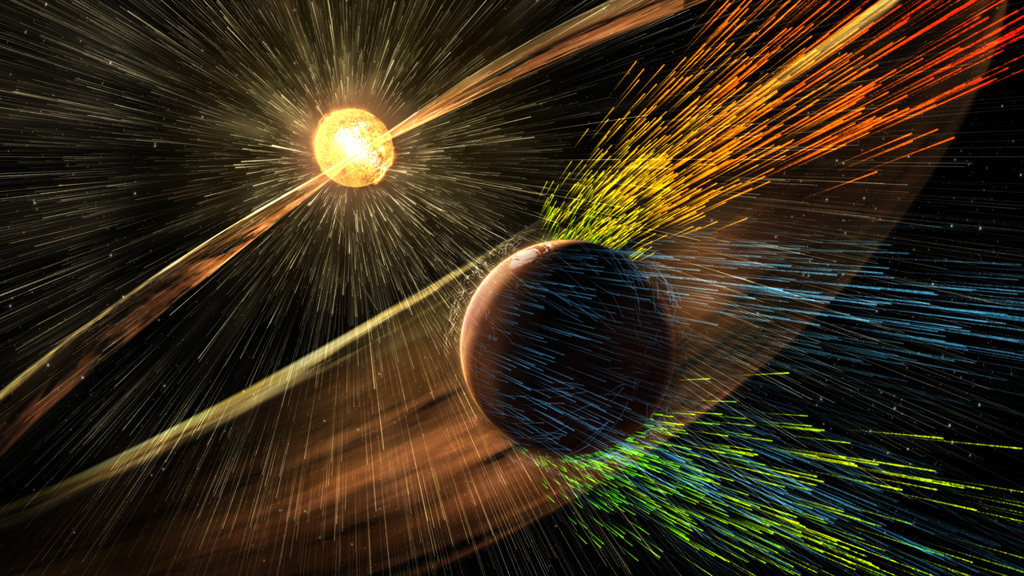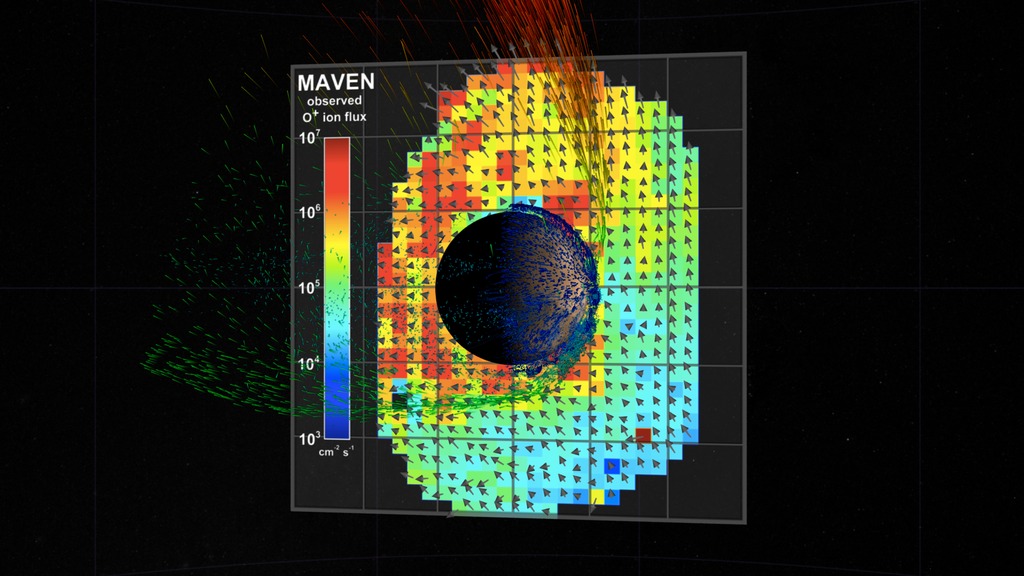Mars' Magnetic Tail

Mars' magnetic tail is shaped and twisted by the solar wind.
Magnetic fields around planets are a shielding buffer between the surface and the stream of charged particles that emanate from the Sun and bathe the solar system. Earth's magnetic field surrounds the whole planet, but Mars lost its global magnetic field billions of years ago and what remains is a patchwork of smaller remnant magnetic fields embedded in certain regions of its surface. On the dark side of the planet, these fields stream into a magnetic tail – with a twist. NASA’s Mars Atmosphere and Volatile Evolution, or MAVEN, spacecraft has observed Mars' magnetic tail that is shaped by the solar wind. As it flows past Mars carrying its own magnetic fields, the solar wind interacts with the magnetic fields on the Martian surface and causes a phenomenon called magnetic reconnection, which puts a 45-degree twist in Mars' magnetic tail. Researchers believe this same process may also slowly strip away Mars' atmosphere. Like a stretched rubber band suddenly snapping to a new shape, magnetic reconnection releases energy, which could actively propel ions in the Martian atmosphere down the magnetotail into space. Explore the images to learn more.

The solar wind interacts with the Mars upper atmosphere, but is deflected past Earth by a global magnetic field (artist's concept).

The solar wind is a stream of particles, mainly protons and electrons, flowing from the sun's atmosphere at a speed of about 1 million mph.

Solar magnetic field lines (yellow) interact with Martian surface magnetic fields (blue), and result in reconnected magnetic fields (red).

MAVEN has been studying Mars since 2014, investigating the Red planet's magnetosphere and atmosphere.
For More Information
See NASA.gov
Credits
Please give credit for this item to:
NASA's Scientific Visualization Studio
Image of Martian magnetic field line interactions courtesy of Anil Rao/Univ. of Colorado/MAVEN/NASA GSFC
-
Animators
- Greg Shirah (NASA/GSFC)
- Ernie Wright (USRA)
- Walt Feimer (KBR Wyle Services, LLC)
- Michael Lentz (USRA)
- Chris Smith (SLAC)
-
Producer
- Dan Gallagher (USRA)
-
Writers
- William Steigerwald (NASA/GSFC)
- Trey Russell Mason (Experiential Learning Program, UMD)
-
Scientists
- David Folta (NASA/GSFC)
- Bruce Jakosky (LASP)
Release date
This page was originally published on Monday, February 4, 2019.
This page was last updated on Sunday, January 5, 2025 at 12:17 AM EST.


